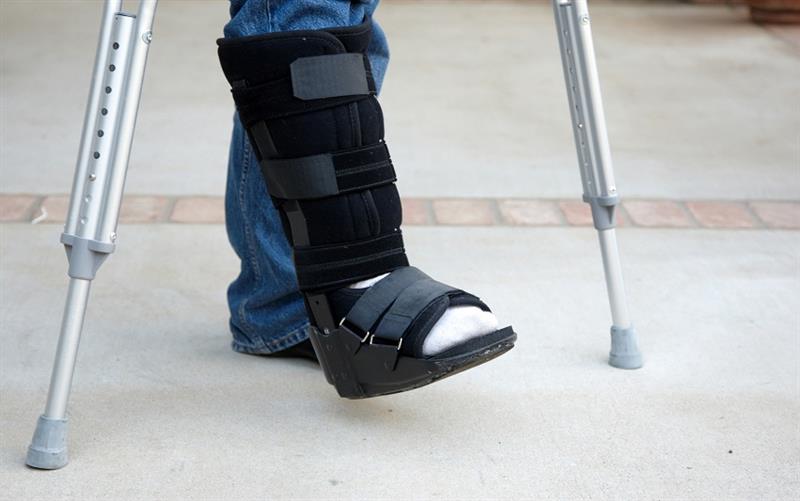
Walking boots can be a vital component of your injury rehabilitation, but it's important to use them properly to prevent needless discomfort or protracted healing. You may optimize your comfort and healing by taking the appropriate measures, which include selecting the appropriate size, securing it correctly, keeping excellent posture, and taking good care of your feet. Never ignore your body's signals, and if you have any concerns, speak with your doctor.
After an accident, wearing a walking boot can help you heal more quickly and comfortably. However, wearing a walking boot correctly requires fitting and wearing methods that are crucial. By taking the appropriate measures to avoid pressure spots, secure the straps appropriately, line the boot correctly, and choose the appropriate size, you may expedite the healing process and maximize comfort throughout your recuperation. See your healthcare professional for further advice if you're ever unsure.
1. Choosing the Right Size
Selecting the appropriate size for a walking boot is the first step towards guaranteeing comfort. several foot sizes are accommodated by the availability of several sizes in walking boots. Usually, your doctor will measure your foot; however, if you choose the boot on your own, make sure it fits well without being too tight or too loose.
Advice: When fitting the boot, consider the kind of socks you'll be wearing with it as this may affect the size.
2. Adjusting the Straps Properly
After selecting the appropriate size, tighten the boot around your foot by adjusting the straps. Straps that fit properly maintain immobilization of the foot and aid in recovery. On the other hand, slack straps might render the boot useless, while overly tight straps can cause problems with circulation.
Advice: To guarantee uniform support, tighten the straps starting at the bottom. Verify that while you walk, your foot doesn't slip within the boot.
3. Use of Compression Socks or Liners
Prolonged usage of a walking boot can generate friction, which can result in blisters and discomfort. Compression liners or socks can increase comfort and lower the chance of discomfort. They also help to lessen swelling, which is a typical problem while recovering from injuries to the foot or ankle.
Advice: If you're wearing the boot in warm weather, choose moisture-wicking socks to keep your foot cool and comfy.
4. Positioning Your Foot Correctly
Your foot needs to be placed properly inside the boot in order for it to work as intended. Without pressing on the front or sides of the boot, your heel should fit snugly at the back.
Advice: Make sure your toes can move a little before fastening the boot, but they shouldn't slip forward while you walk.
5. Adding Extra Padding for Comfort
Some walking boots could not have enough cushioning in the places where your foot or leg make direct contact with them, which over time could become uncomfortable. You can avoid pressure points and enhance your general comfort by adding more padding to the area around your ankle, heel, or calf.
Advice: Fill in any spaces or sore spots with medical-grade padding, foam pads, or gauze.
6. Maintaining Proper Walking Posture
Not modifying your gait when wearing a walking boot is a common error. Back, hip, or knee pain may result from walking with uneven strides because the boot raises one foot.
Advice: To establish balance, use a lift or support for the foot that is not damaged. An orthopaedic shoe insert or a shoe with a thicker sole can help balance out the disparity in height.
7. Practicing Safe Walking Techniques
It's important to adjust your gait when wearing a walking boot in order to prevent further harm or discomfort. Unless your doctor instructs you otherwise, move carefully, take short steps, and avoid placing too much weight on the affected foot.
Advice: Until you feel at ease walking with the boot, use crutches or a walker if balance is an issue.
8. Caring for the Boot and Foot
For comfort, you must take care of your foot and your walking boot. Your skin may get irritated by dirt and debris found inside the boot, and a buildup of moisture may result in fungal infections.
Advice: Look for any indications of discomfort or pressure sores on your foot and periodically clean the inside of the boot. If the boot gets wet, be sure to let it air out.
9. Gradually Transitioning Out of the Boot
When your physician gives the all-clear to stop wearing the walking boot, go slowly. Resuming regular activities too soon after taking off the boot may put tension on the healing area and result in setbacks.
Advice: When you go back to wearing regular shoes, pay close attention to your doctor's directions regarding how long to wear the boot each day.
10. Consulting Your Healthcare Provider
See your healthcare practitioner if the walking boot causes you any discomfort or suffering, or if it seems to be useless. To enhance your comfort and recuperation, they might need to modify the fit or offer more advice.
Advice from your doctor regarding when and how to wear the walking boot should always be followed. Wearing it too long or too short may make healing more difficult.